We’ve been working with the Giraffe Conservation Foundation (GCF) for 18 months monitoring the Rothschild giraffe. Earlier this year our giraffe team leader Phil Molyneux travelled out to Uganda to support Dr Julian Fennessy, co-founder of the GCF, and vets from the Uganda Wildlife Authority (UWA) to collect genetic material from the giraffes in Kidepo National Park, Uganda. This information will make a huge contribution to our understanding of this isolated population of giraffe.
A recent landmark study led by Julian has found that there are four giraffe species rather than one; with Rothschild populations belonging to a new species – the “Nubian” giraffe. The discovery could help inform conservation efforts for all four species of giraffe.
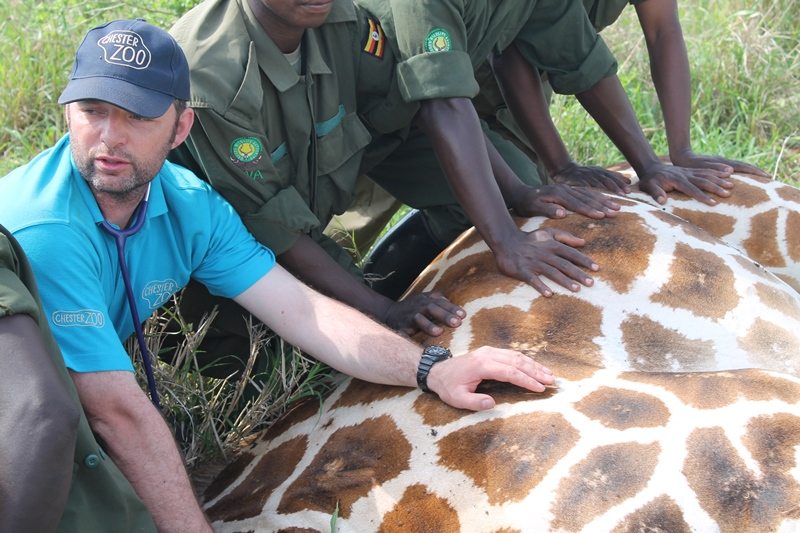
Among other important questions the samples collected by the team in Uganda will help reveal where the Kidepo giraffe population fits into this fascinating genetic puzzle.The team also fitted some state of the art monitoring equipment on two giraffes.
Phil tells us more about what he got up to on his trip:
Arriving at Kidepo
“Uganda has ten National Parks displaying a vast array of beautiful East African wildlife. Kidepo National Park spans 1,442 square km and is home to over 70 mammal species including African elephant, Burchell’s zebra and the beautiful Rothschild’s giraffe. I had nine days to spend in Uganda to help Julian Fennessey collect genetic material from the giraffes and fit two head collars.
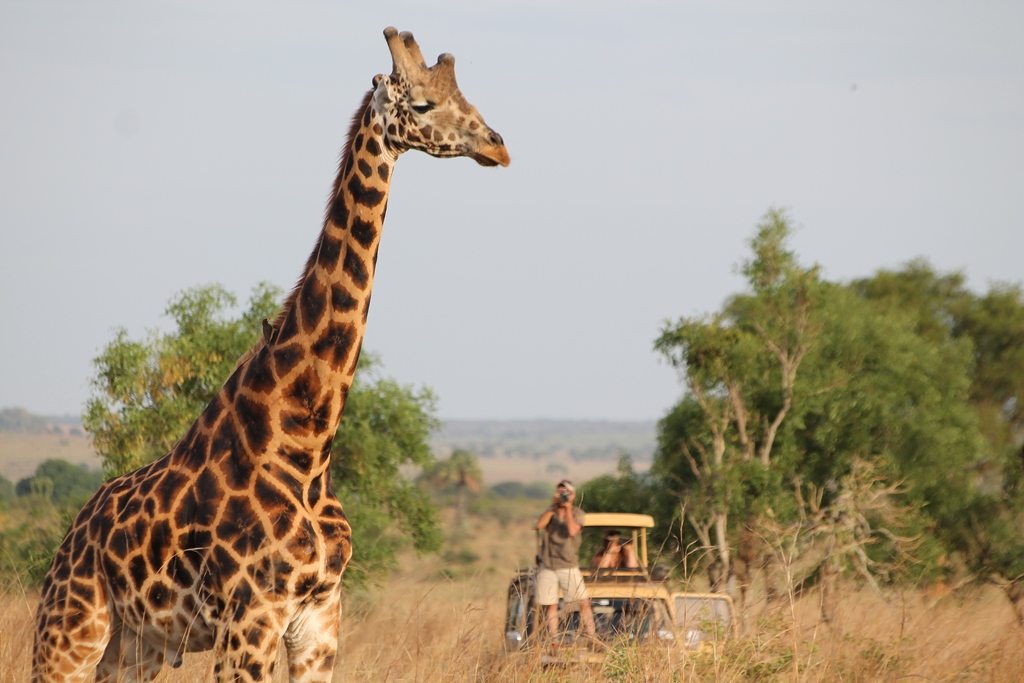
“My first view of Kidepo was from N’guru Moru camp where I was struck by the vast luscious green landscape filled with trees as far as my eyes could see. The park is protected by more than 70 rangers and there are several guarded check points to pass before entry can be gained. The park is home to more than 2,500 African buffalo and we managed to see several hundred soon after entering, followed by several zebra, eland and hartebeest – a truly magnificent sight.
Having worked with Rothchild’s giraffes at the zoo for over twenty years I was very excited to see them in the wild.

My first glimpse was truly magnificent. What surprised me was how far apart individuals were comfortably feeding from one another considering lions are frequently spotted in the park. I spotted one male giraffe from 3-4 km away and it was just possible to make out the outline of the bottom half of the giraffe through the binoculars. I thought giraffe would be easy to spot so I was surprised to see that they blended perfectly into a tree lined background. We had two very productive days, spotted 11 individual adult giraffes and covered more than 100 km of the park!
DNA Sampling
“A large part of my trip was helping the team collect DNA samples to gather vital information for understanding the relationships between individuals in Rothchild’s giraffe. Working with the Uganda Wildlife Authority and a small vet team, I spent a day collecting the DNA from as many giraffe as possible. It was amazing to see the team in action. The vet with the biopsy dart was driven within 60m of a giraffe and then fired the dart at the upper hind leg. The small dart then hit the giraffe tissue and a small biopsy is cut by the dart and is contained within the dart tip which then falls with the dart to the ground to be picked up.
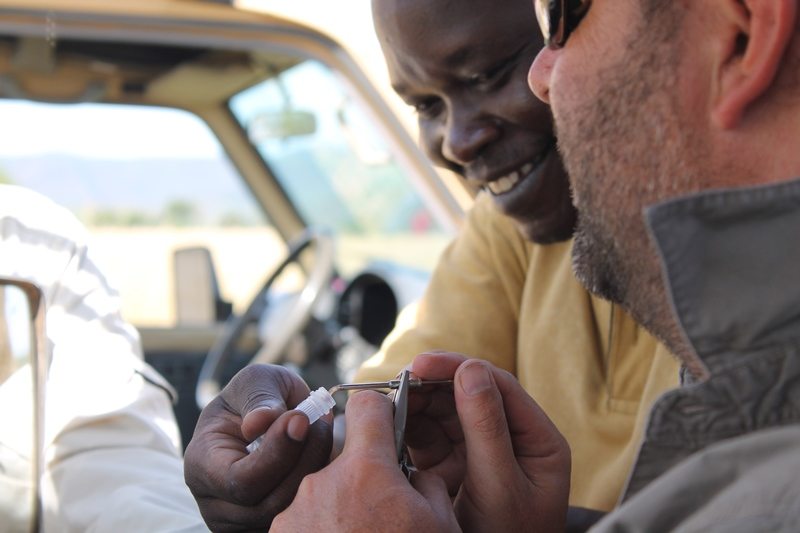
Fitting collars
“The day we fitted the collars we went out in three vehicles. We found a small group of five giraffe and an adult female without a calf was very carefully selected. Once chosen, the tranquiliser dart was administered and once the giraffe was secured and settled we proceeded to fit the GPS head collar. The GPS collar will send three signals a day when fitted to the giraffe and allow us to track long term movements over a two year period. This is vital to gain a greater understanding about the animal. A blood and tissue biopsy was taken and a number of measurements of the individual. All this only took 14 minutes from start to end. When the team finished the giraffe stood up, ran off and was soon joined by the rest of the herd.
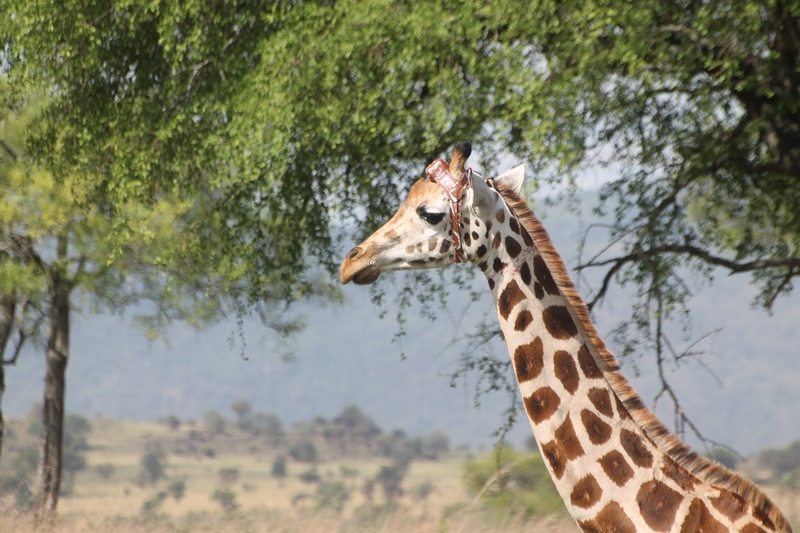
“The second activity we conducted was fitting a headcam to one of the giraffes; this particular camera collar is designed to capture over 100 hours of video throughout the day and night lasting approximately one week. The information collected will provide the team with vital information about the giraffe movements. The headcam was fixed between the ossicones (the two horns on the top of their head).
“I felt very privileged to be representing Chester Zoo and was very proud of what GCF, UWA and our team had accomplished over my nine days in Uganda.”
We are working alongside giraffe experts from around the world to create a conservation action plan to ensure that Rothchild giraffe populations don’t fall to even more critical levels.
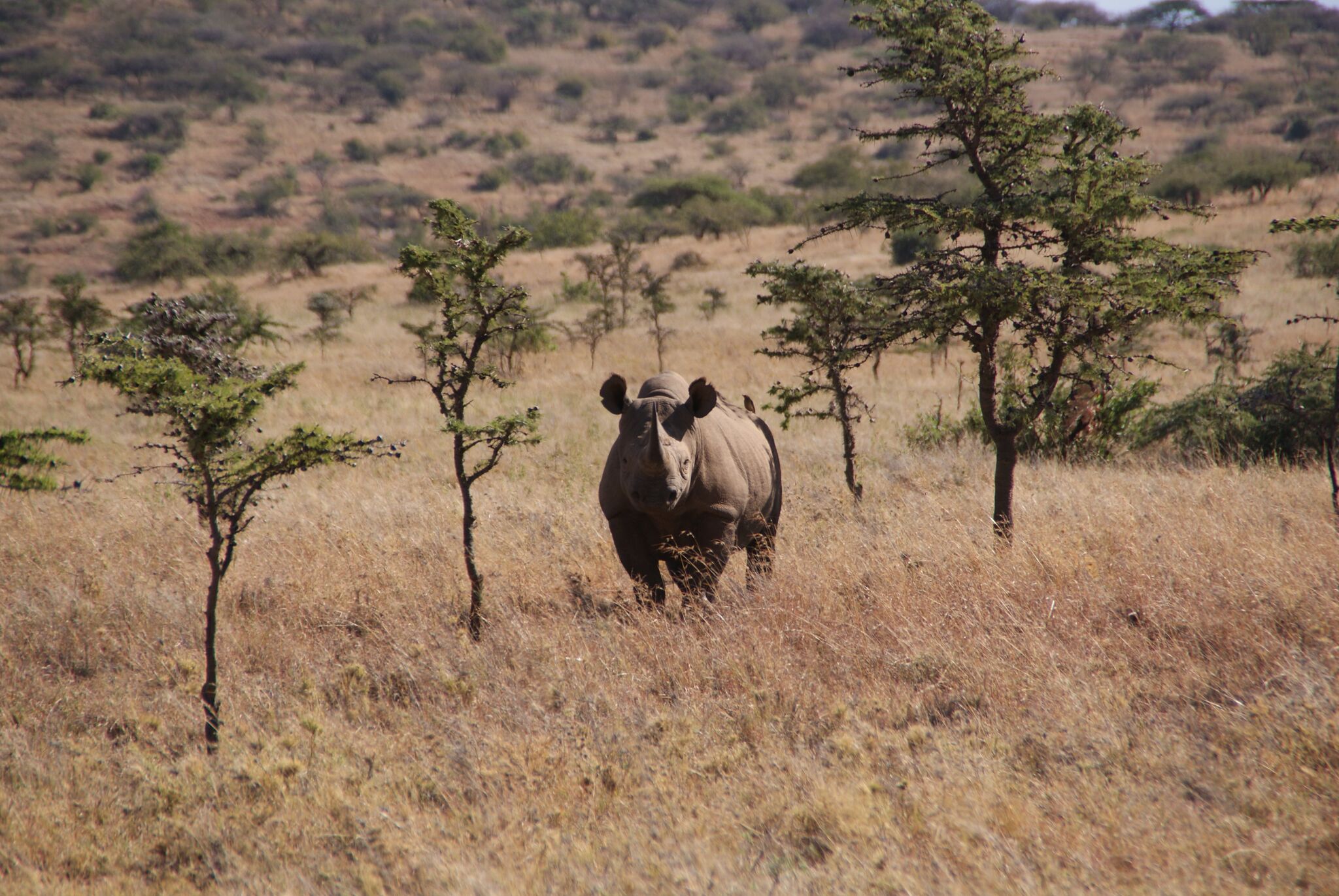
Donate to our conservation work in Africa